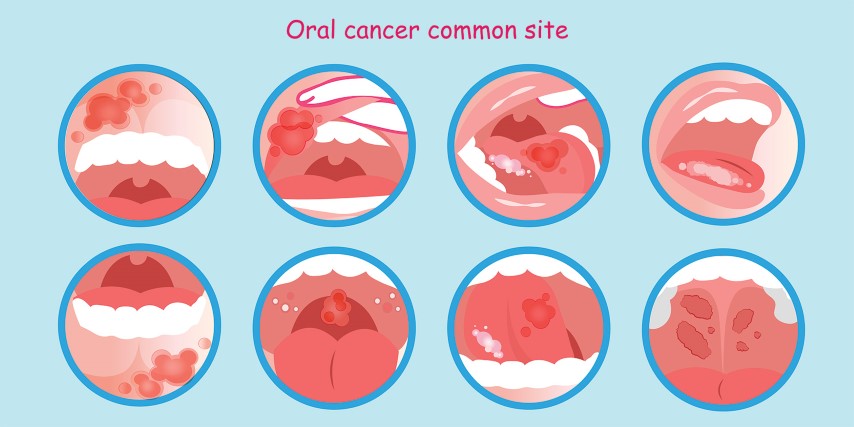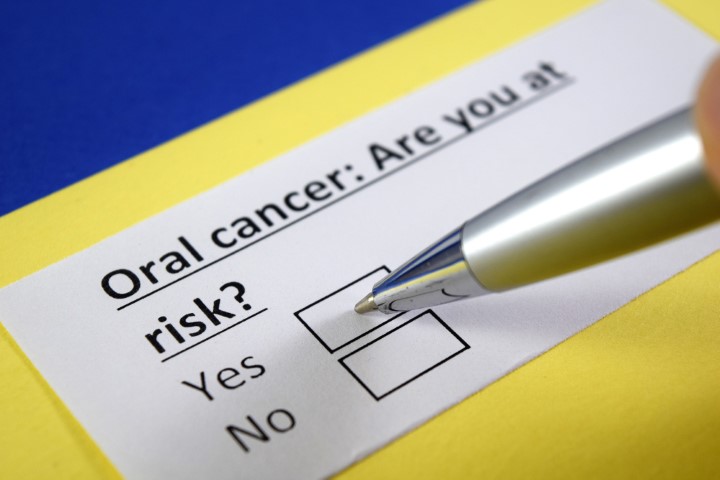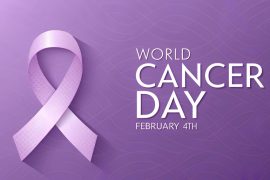Oral Cancer, as the name itself suggests, refers to cancerous growth in any part of the mouth (oral cavity). It falls under a category of cancers called Head and Neck Cancers. Also known as Mouth Cancer or Oral Cavity Cancer, this type of cancer occurs on the lips, gums, hard and soft palates, inner cheek lining, tongue, the roof of the mouth, under the tongue, and throat. Mouth Cancer can be life-threatening if not diagnosed and treated immediately. Getting quarterly or biannual dental checkups can help in the early detection and treatment of oral cancer.
Make an appointment with your doctor as soon as you spot symptoms such as a lip/mouth sore, a white or red spot in your mouth, a lump in the mouth, difficulty/pain while swallowing, or pain in the mouth. The doctor will ensure if the symptoms are due to other causes such as an infection or any other underlying condition before diagnosing oral cancer.
Who are at risk of getting diagnosed with Oral Cancer?
According to the American Cancer Society, men are at a higher risk of getting diagnosed with oral cancer than women. Oral cancer is most prevalent in men over the age of 40-50. Some of the risk factors that lead to the development of oral cancer include:
Smoking: People who have the habit of frequently smoking cigarettes, cigars, or pipes are more likely to develop oral cancer as compared to people who do not smoke.
Other forms of tobacco use: Apart from smoking, people who consume tobacco by snuffing and chewing are prone to oral cancer in the gums, lips, and inner cheeks.
Alcohol consumption: People who consume excessive amounts of alcohol are six times more likely to get diagnosed with oral cancer as compared to non-drinkers.
Family History: If one or more of your family members are diagnosed with oral cancer, you are more susceptible to the disease.
Weak immune system: It is your immune system that helps your body fight against various illnesses. If your immune system is weak due to certain conditions, you are prone to oral cancer, along with other diseases.
Human Papillomavirus (HPV): The Human Papillomavirus (HPV) is a sexually transmitted virus that could be a major contributing factor for the development of oral cancer.
What are the precancerous conditions of the oral cavity?
A precancerous condition is a condition that involves abnormal cells which lead to an increased risk of developing cancer. Depending on the type of cancer, the precancerous conditions can be few or many.
In oral cancer, precancerous conditions are the changes that take place in the cells of the mouth. These conditions are not developed into cancer yet. But, if left untreated, there are higher chances that these abnormal changes or mutations might advance into oral cancer.
Oral cancer has the two most common precancerous conditions. They are:
Leukoplakia:
Leukoplakia is an unusual grey or white patch that is visible on the tongue, the gums, the inner cheek linings, or the floor of your mouth. If one has leukoplakia, it is not necessary that he/she will develop oral cancer. Depending on the size and shape of the abnormal cells, this precancerous condition may develop into oral cancer.
Erythroplakia:
Erythroplakia is an abnormal red patch or a group of red spots that is visible on the mucous membrane in the mouth, with no definitive cause. This precancerous condition has higher chances of developing into oral cancer as compared to Leukoplakia. Around 50% of these conditions advance into Squamous Cell Carcinoma.



How can you prevent oral cancer?
Though there are no proven measures to prevent oral cancer. However, there are certain precautions one can take to reduce the risk. They are as follows:
Stopping the consumption of tobacco: As mentioned above, tobacco usage is one of the most common risk factors that lead to oral cancer. If you are a regular consumer of tobacco, put a stop to it. Smoking, chewing, or snuffing tobacco is dangerous as it exposes the cells in your mouth to cancer-inducing chemicals.
Moderate alcohol consumption: Excessive alcohol consumption can weaken the cells in your mouth, making you vulnerable to oral cancer. Hence, alcohol should be consumed in moderate amounts or to be completely avoided to lower the risk of mouth cancer.
Avoid excessive sun exposure: Protect the skin on your lips from excessive sunlight by applying lip balm with sun protection as a part of your regimen. You can also wear a broad-rimmed hat when you step out and stay in the shade as much as possible.
The first step to fighting oral cancer is to be mindful of the risk factors and symptoms. Although oral cancer can become fatal if not treated on time, taking precautions to reduce the risk will help keep oral cancer at bay. Have a regular quarterly/biannual check-up with your dentist and ensure proper oral hygiene, because prevention is better than cure!




